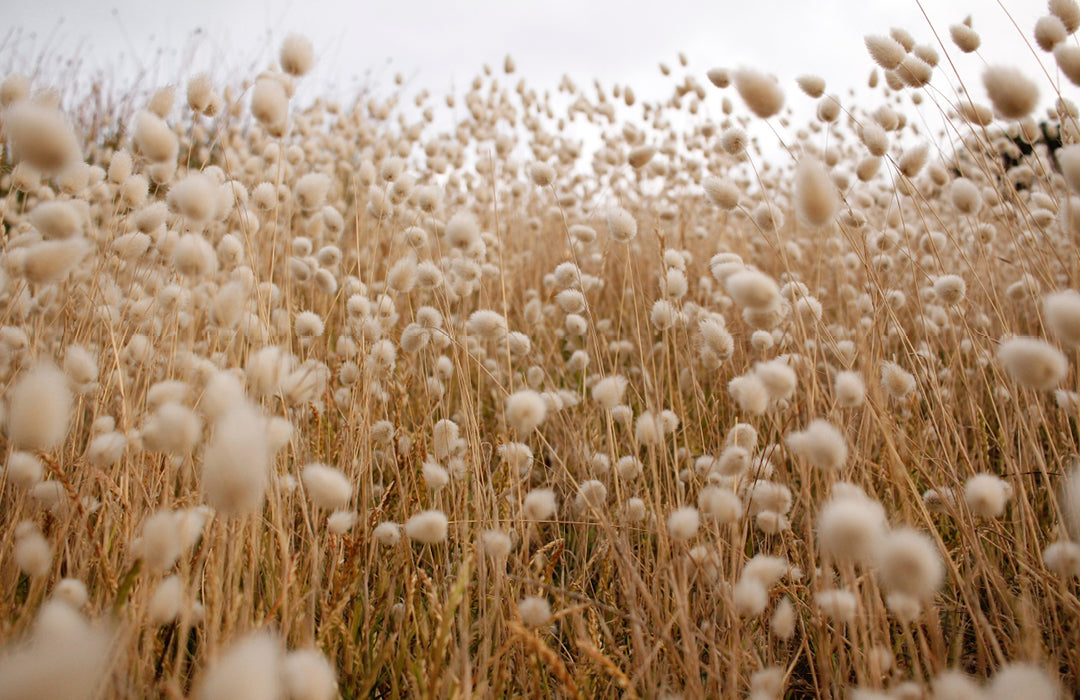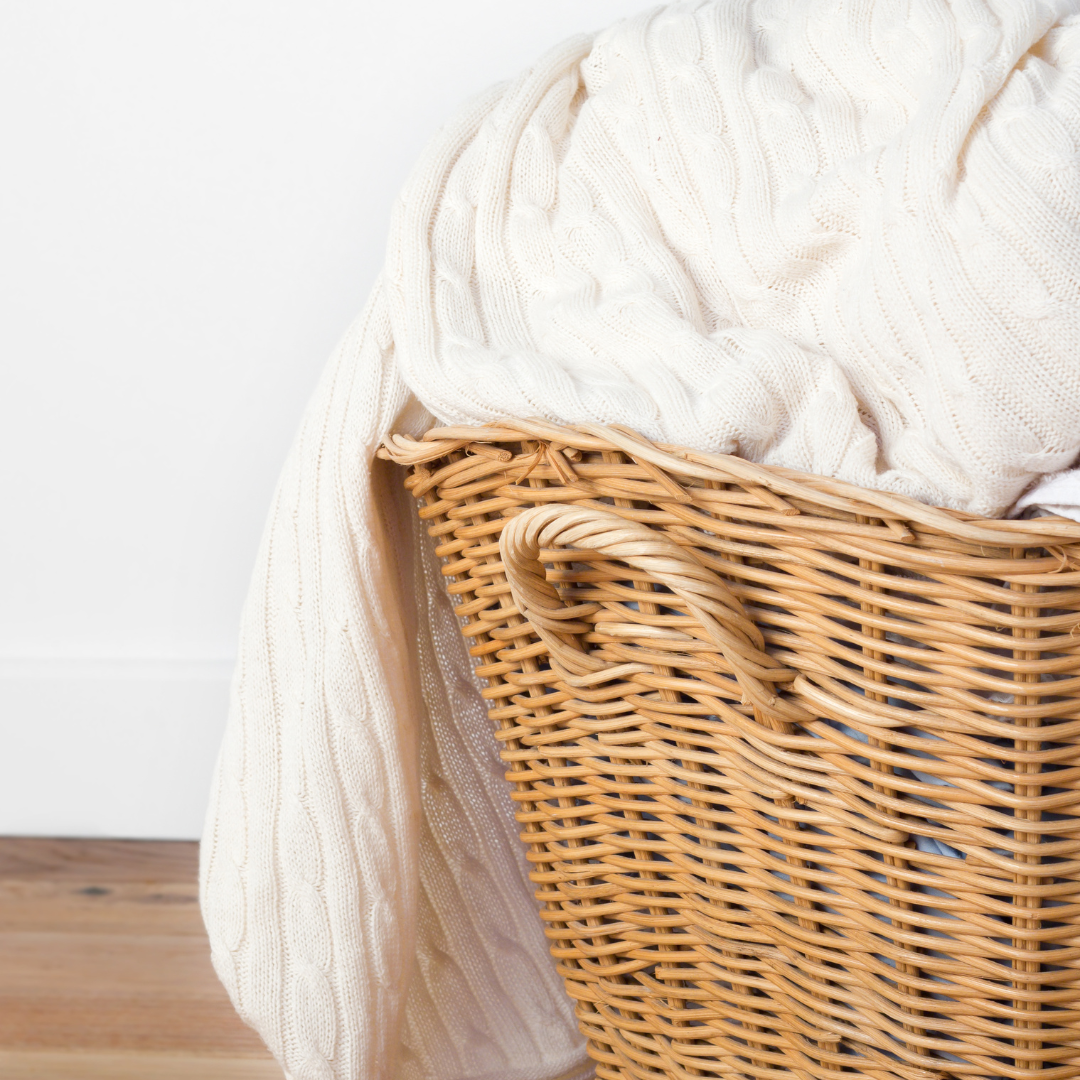BIO-BAUMWOLLE (GOTS-ZERTIFIZIERT)
Bio-zertifizierte Baumwolle, auch bekannt als Global Organic Textile Standard (GOTS)-zertifizierte Baumwolle, ist eine Baumwollart, die nach strengen Umwelt- und Sozialstandards angebaut und verarbeitet wird. Diese Standards stellen sicher, dass die Baumwolle ohne den Einsatz synthetischer Pestizide oder Düngemittel angebaut wird und dass die am Produktionsprozess beteiligten Bauern und Arbeiter fair behandelt werden und einen existenzsichernden Lohn erhalten. Einer der Hauptvorteile von Bio-zertifizierter Baumwolle besteht darin, dass sie mit nachhaltigen Anbaumethoden angebaut wird, die die Umwelt schützen und natürliche Ressourcen schonen. Dazu gehören die Reduzierung des Wasserverbrauchs, die Förderung der Artenvielfalt und die Minimierung der Umweltverschmutzung. Darüber hinaus trägt der Bio-Baumwollanbau dazu bei, faire Arbeitspraktiken zu fördern und die Lebensbedingungen von Bauern und Arbeitern zu verbessern.
Bio-zertifizierte Baumwolle ist außerdem frei von schädlichen Chemikalien, was bedeutet, dass sie sicherer für die Umwelt und für die Menschen ist, die während des Produktionsprozesses damit umgehen.
Außerdem gilt es als hypoallergen und ist daher eine gute Wahl für Menschen mit empfindlicher Haut.
Die GOTS-Zertifizierung ist ein weithin anerkannter Standard für Bio-Textilien und garantiert, dass die Produkte zu mindestens 70 % aus Bio-Fasern bestehen und die restlichen 30 % ebenfalls unter umwelt- und sozialverträglichen Verfahren hergestellt werden.
TENCEL™ LYOCELL
Tencel oder Lyocell ist eine Art Zellulosefaser, die aus dem Zellstoff von Eukalyptusbäumen gewonnen wird. Bei der Herstellung von Tencel wird der Holzzellstoff in einen Zellstoffbrei zerlegt und anschließend in einem geschlossenen Kreislaufverfahren, bei dem die verwendeten Lösungsmittel recycelt werden, zu Fasern gesponnen.
Dies macht Tencel im Vergleich zu herkömmlichen Zellulosefasern wie Rayon oder Viskose zu einer umweltfreundlicheren Option. Einer der Hauptvorteile von Tencel ist seine hohe Saugfähigkeit, was es zu einer bequemen und atmungsaktiven Wahl für Kleidung und andere Textilien macht. Außerdem fühlt es sich weich an und fühlt sich angenehm kühl auf der Haut an. Tencel-Fasern sind außerdem stark und langlebig, was bedeutet, dass Tencel-Kleidung regelmäßiger Abnutzung standhält und lange hält.
Tencel gilt auch als umweltfreundliche Option, da der Herstellungsprozess von Tencel in einem geschlossenen Kreislauf erfolgt, was bedeutet, dass die verwendeten Lösungsmittel recycelt werden und nicht in die Umwelt gelangen. Die für die Tencel-Produktion verwendeten Eukalyptusbäume werden ebenfalls in nachhaltig bewirtschafteten Wäldern angebaut.
Aufgrund seiner Umwelt- und Leistungsvorteile erfreut sich Tencel in der Modebranche immer größerer Beliebtheit.
Insgesamt ist Tencel (auch bekannt als Lyocell) eine vielseitige und umweltfreundliche Zellulosefaser, die viele Vorteile bietet. Seine Weichheit, Saugfähigkeit und Haltbarkeit machen es zu einer bequemen und praktischen Wahl für Kleidungsstücke.
BAUMWOLLE
Baumwolle ist eine Naturfaser, die aus den Samenkapseln der Baumwollpflanze gewonnen wird. Es ist eine der am häufigsten verwendeten Fasern der Welt und wird in einer Vielzahl von Textilien verwendet. Baumwolle ist für ihre Weichheit, Atmungsaktivität und Strapazierfähigkeit bekannt und daher eine beliebte Wahl für eine Vielzahl von Produkten.
Baumwolle ist außerdem hypoallergen, was sie zu einer guten Wahl für Menschen mit empfindlicher Haut macht. Außerdem ist es pflegeleicht und kann gewaschen und getrocknet werden, ohne einzulaufen oder die Form zu verlieren. Baumwolle ist außerdem eine umweltfreundliche Faser. Es handelt sich um eine nachwachsende Ressource, die ohne den Einsatz synthetischer Pestizide oder Düngemittel angebaut wird.
Der Anbau von Bio-Baumwolle trägt auch dazu bei, Wasser zu sparen und die Gesundheit des Bodens zu schützen. Erwähnenswert ist jedoch, dass die traditionellen Methoden des Baumwollanbaus mit einem hohen Wasserverbrauch und dem Einsatz von Pestiziden verbunden sind, was negative Auswirkungen auf die Umwelt haben kann.
Daher ist es wichtig, die Umweltauswirkungen von Baumwollprodukten zu berücksichtigen. Deshalb entscheiden wir uns nach Möglichkeit für Bio- oder nachhaltigere Optionen, wie z. B. zertifizierte Bio-Baumwolle.
CUPRO
Cupro ist ein halbsynthetischer Stoff, der aus den Zellulosefasern der Baumwolle hergestellt wird. Bei der Herstellung von Cupro werden die Baumwollfasern mit Chemikalien behandelt, um die natürlichen Verunreinigungen zu entfernen, und anschließend werden die Fasern zu einem weichen und seidigen Stoff gesponnen.
Cupro wird auch „vegane Seide“ genannt, da es aus natürlichen Materialien hergestellt wird, aber eine seidenähnliche Textur hat.
Einer der Hauptvorteile von Cupro besteht darin, dass es Seide sehr ähnlich aussieht und sich anfühlt, aber nachhaltiger und umweltfreundlicher ist. Cupro ist biologisch abbaubar und kann durch nachhaltige Anbaumethoden hergestellt werden. Darüber hinaus ist es hypoallergen und atmungsaktiv, was es zu einer bequemen Wahl für Kleidung und andere Textilien macht. Darüber hinaus ist Cupro knitterarm und pflegeleicht, was es zu einer praktischen Option für den täglichen Gebrauch macht.
Es handelt sich außerdem um einen strapazierfähigen Stoff, der bei richtiger Pflege lange halten kann.
Insgesamt ist Cupro ein nachhaltiger und vielseitiger Stoff, der viele Vorteile bietet. Seine weiche und seidige Textur, Atmungsaktivität und Haltbarkeit machen es zu einer bequemen und praktischen Wahl für Kleidung und andere Textilien.
ELASTHAN
Elasthan, auch Elasthan oder Lycra genannt, ist eine Kunstfaser, die für ihre außergewöhnliche Elastizität bekannt ist. Es handelt sich um ein künstlich hergestelltes Polymer, das häufig mit Naturfasern wie Baumwolle, Wolle oder Seide vermischt wird, um Stoffe mit Dehn- und Erholungseigenschaften herzustellen.
Einer der Hauptvorteile von Elastan ist seine Fähigkeit, sich zu dehnen und wieder in seine ursprüngliche Form zu bringen. Dies macht es zu einer beliebten Wahl für Kleidung wie Leggings, Yogahosen und Aktivkleidung, da es eine bequeme Passform und Bewegungsfreiheit ermöglicht. Elasthan ist außerdem für seine Strapazierfähigkeit und Verschleißfestigkeit bekannt, was bedeutet, dass mit Elastan hergestellte Kleidung lange halten kann. Darüber hinaus ist es pflegeleicht und kann wie andere synthetische Fasern in der Maschine gewaschen und getrocknet werden.
DEADSTOCK – ZIRKULÄRE STOFFE
Deadstock- oder Kreislaufstoffe sind eine beliebte Wahl bei nachhaltigen Modemarken, die Abfall reduzieren und das Beste aus übrig gebliebenen Materialien machen möchten. Diese Stoffe sind Überbleibsel früherer Produktionen und werden von den Herstellern nicht mehr benötigt, haben aber dennoch viel Wert und Potenzial.
Durch die Verwendung von Reststoffen sind wir in der Lage, einzigartige, einzigartige Kleidungsstücke herzustellen und gleichzeitig die Umweltbelastung durch die Textilproduktion zu reduzieren. Diese Stoffe stammen aus einer Überproduktion oder sind Überreste hochwertiger Designerkreationen, die andernfalls vernichtet werden müssten. Dies ist eine zweite Chance für diese kostbaren Stoffe. Da der Stoff außerdem nicht mehr hergestellt wird, kann er den daraus hergestellten Kleidungsstücken ein Gefühl von Exklusivität und Seltenheit verleihen.
Deadstock-Stoffe können aus beliebigen Materialien bestehen. Hier verwenden wir auch synthetische Fasern, da wir den ökologischen Nutzen darin sehen, Stoffe zu verwenden, die bereits im Umlauf sind.
Deadstock-Stoffe reduzieren Abfall und schaffen einzigartige Kleidungsstücke.
VISKOSE
Viskose ist eine Art halbsynthetische Zellulosefaser, die aus natürlichen Rohstoffen wie Zellstoff hergestellt wird.
Bei der Herstellung von Viskose werden die Zellulosefasern im Zellstoff mithilfe von Chemikalien zersetzt und die resultierende Lösung anschließend zu Fasern gesponnen. Viskosefasern sind bekannt für ihre weiche, seidige Textur und ihre guten Drapiereigenschaften, was sie zu einer beliebten Wahl für Kleidung, Bettwäsche und andere Textilien macht. Viskosefasern lassen sich leicht einfärben und ermöglichen so eine große Farbvielfalt.
Darüber hinaus ist es ein sehr vielseitiges und beliebtes Material, das in den unterschiedlichsten Textilien verwendet wird. Es ist jedoch wichtig zu beachten, dass die Herstellung von Viskose erhebliche Auswirkungen auf die Umwelt hat, da sie große Mengen Wasser und Chemikalien erfordert und Umweltverschmutzung verursacht.
Deshalb versuchen wir, den Einsatz von Viskose zu vermeiden und stattdessen Ecovero-Viskose zu verwenden, die umweltfreundlichere Variante.
WOLLE
Wolle ist eine Naturfaser, die aus dem Fell von Schafen, Ziegen und anderen Tieren gewonnen wird. Es ist ein nachwachsender Rohstoff und bekannt für seine Haltbarkeit, Wärme und feuchtigkeitsableitenden Eigenschaften. Einer der Hauptvorteile von Wolle ist ihre Fähigkeit, die Körpertemperatur zu regulieren. Es ist von Natur aus isolierend, was bedeutet, dass es Sie bei kaltem Wetter warm und bei warmem Wetter kühl hält. Dies macht es zu einer beliebten Wahl für Kleidung wie Pullover, Socken und Oberbekleidung.
Wollfasern haben eine natürliche Kräuselung, die ihnen eine hohe Elastizität und Widerstandsfähigkeit verleiht. Das bedeutet, dass Wollstoffe Dehnungen und Biegungen standhalten, ohne ihre Form zu verlieren. Wolle ist außerdem von Natur aus flecken- und geruchsabweisend und muss weniger gewaschen werden als andere Stoffe.
Wolle ist außerdem umweltfreundlich, da es sich um einen natürlichen, nachwachsenden Rohstoff handelt. Es ist biologisch abbaubar und kann recycelt oder kompostiert werden. Einige Wollproduktionsmethoden nutzen nachhaltige Praktiken und unterstützen lokale Gemeinschaften.
Insgesamt ist Wolle eine Naturfaser, die viele Vorteile bietet und bei nachhaltiger Produktion umweltfreundlich sein kann.
VIRIDIS® VEGANES LEDER
Als nachhaltige Alternative zeichnet sich das vegane Leder Viridis® aus, das bis zu 69 Prozent aus pflanzlichen Rohstoffen besteht. Im Gegensatz zu herkömmlichem Kunstleder, das aus Erdöl hergestellt wird, nutzt Viridis Nebenprodukte aus Mais und Weizen und reduziert so die Auswirkungen auf die menschliche Gesundheit, die Umwelt und den Klimawandel erheblich. Dieses innovative Material wird aus verantwortungsvoll gewonnener Viskose und biobasiertem Polyurethan hergestellt, das aus europäischen Non-Food-, gentechnikfreien Mais- und Weizenpflanzen gewonnen wird. In einer Branche, die weitgehend auf fossile Brennstoffe angewiesen ist, stellt Viridis einen bedeutenden Schritt hin zu umweltfreundlichen und ethisch einwandfreien Materialien dar.
Zertifizierungen:
LCA (Life Cycle Assessment) zeigt, dass Viridis® nachhaltiger ist als jedes andere ähnliche gefälschte Material.
USDA-Bio bevorzugt.
OEKO-TEX Standard 100.
FSC®
TRIACETAT / ACETAT
Triacetat und Acetat sind beides synthetische Textilmaterialien, die aus Zellulose gewonnen werden, aber sie haben unterschiedliche Eigenschaften.
Triacetat: Triacetat ist eine synthetische Faser, die für ihre Haltbarkeit und Vielseitigkeit bekannt ist. Es bietet das Beste aus natürlichen und synthetischen Fasern, da es aus Zellulose gewonnen wird, aber über verbesserte Eigenschaften verfügt. Triacetat-Stoffe sind äußerst knitterfrei und daher eine beliebte Wahl für Kleidungsstücke, die ein poliertes Aussehen erfordern. Sie haben eine glatte Textur und eine glänzende Oberfläche, wodurch sie für elegante und formelle Kleidung geeignet sind. Triacetat-Stoffe sind außerdem feuchtigkeitsbeständig und schnell trocknend, sodass sie für verschiedene Wetterbedingungen geeignet sind.
Acetat: Acetat ist eine weitere synthetische Faser, die aus Zellulose gewonnen wird, aber im Vergleich zu Triacetat andere Eigenschaften aufweist. Acetatstoffe sind für ihr luxuriöses Aussehen bekannt, da sie oft eine glänzende und satinartige Oberfläche haben. Sie sind leicht und fallen gut, was sie zu einer bevorzugten Wahl für Abendkleider und Dessous macht. Acetatstoffe sind jedoch weniger haltbar als Triacetatstoffe und können anfälliger für Falten sein. Außerdem weisen sie eine geringere Feuchtigkeitsbeständigkeit auf und sind daher möglicherweise nicht die beste Wahl für Außenbereiche oder Umgebungen mit hoher Luftfeuchtigkeit.
Zusammenfassend lässt sich sagen, dass sowohl Triacetat als auch Acetat ihre einzigartigen Eigenschaften haben und aufgrund ihrer spezifischen Eigenschaften in verschiedenen Arten von Kleidung verwendet werden. Triacetat wird wegen seiner Haltbarkeit und Knitterfestigkeit bevorzugt, während Acetat wegen seines luxuriösen Aussehens und Faltenwurfs geschätzt wird.


